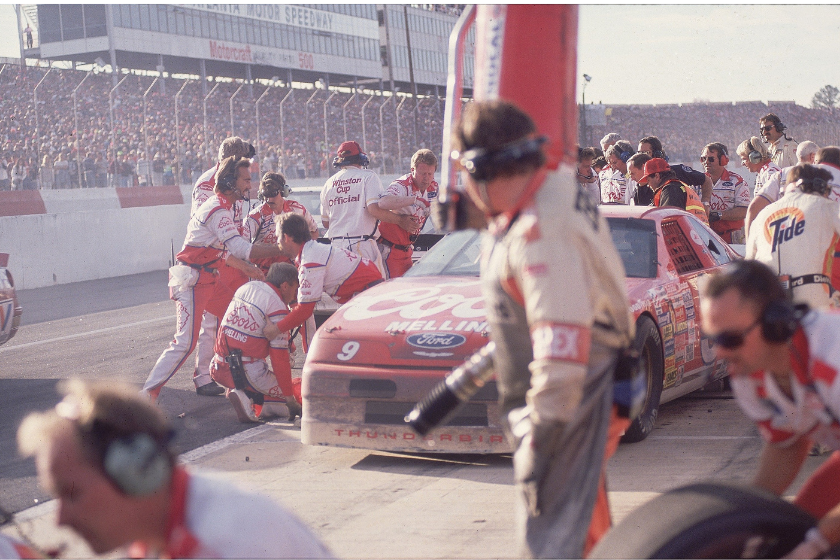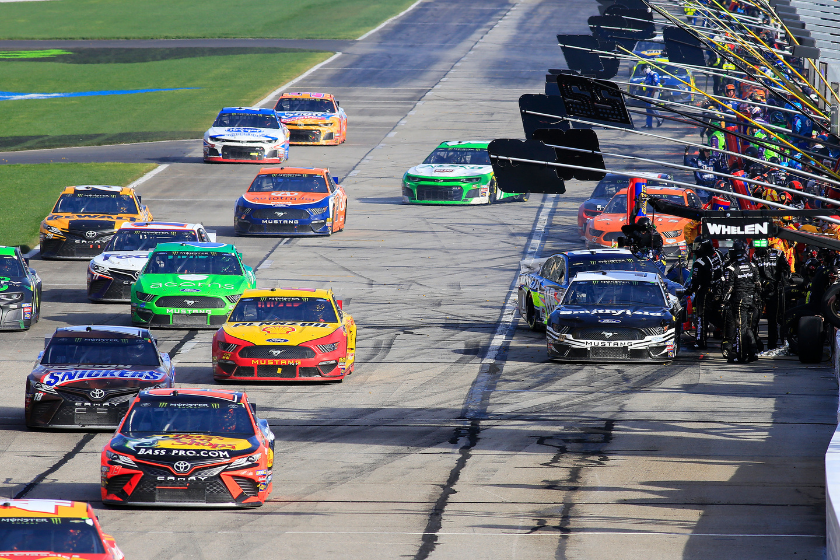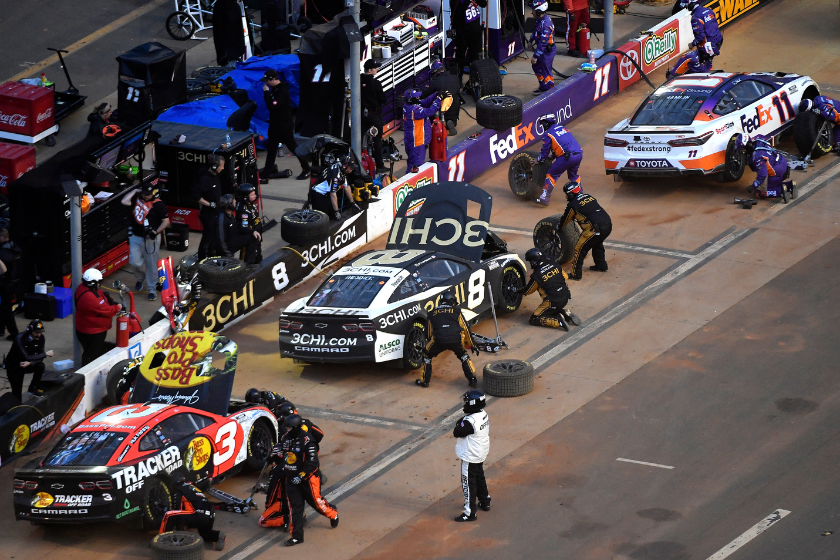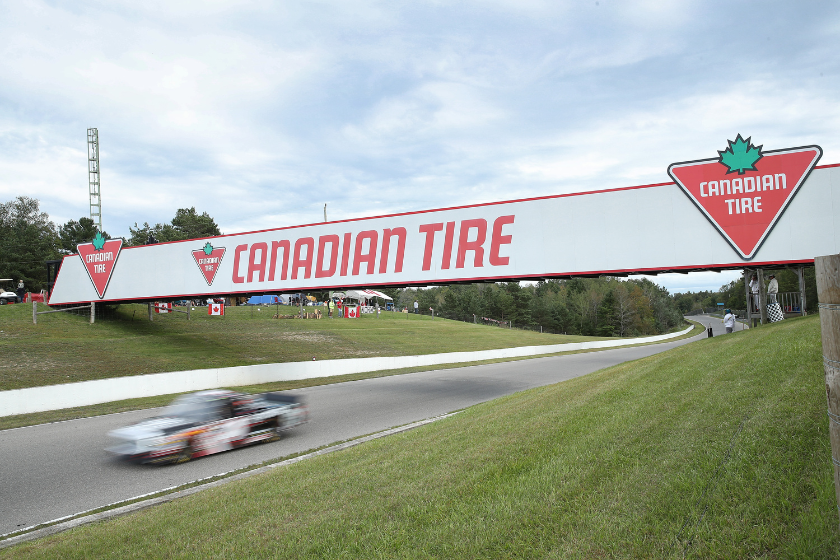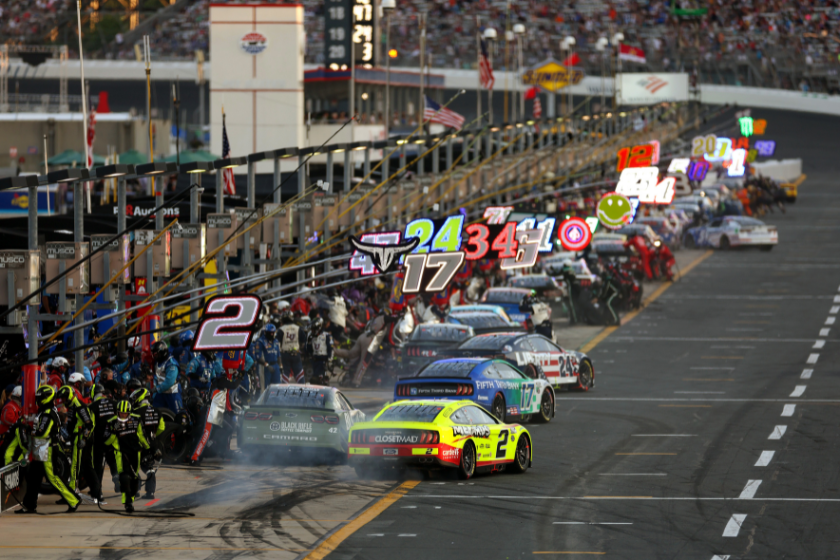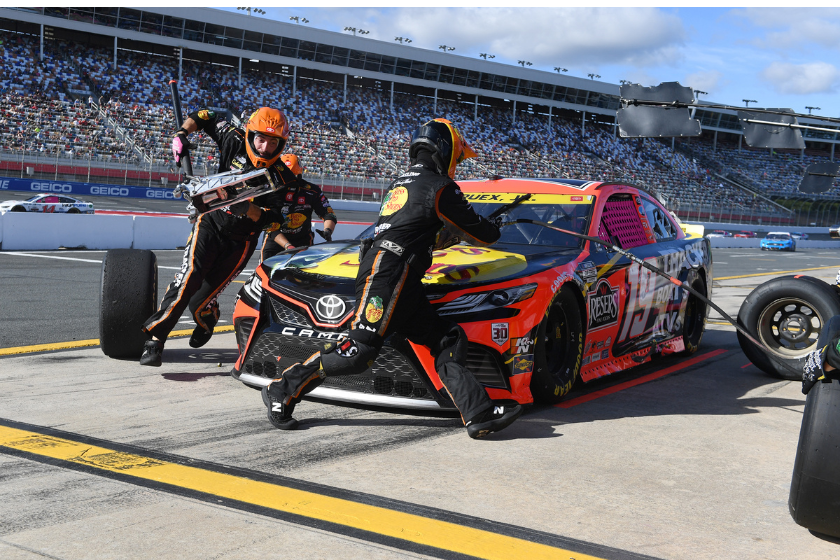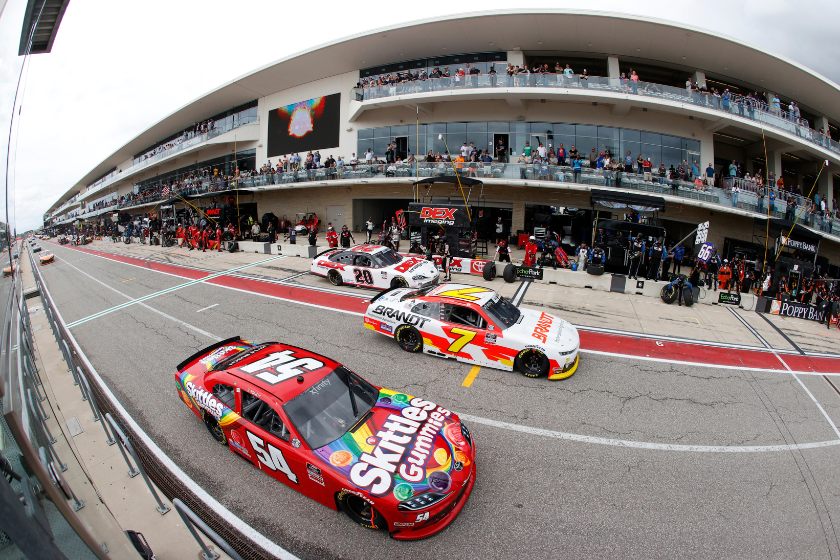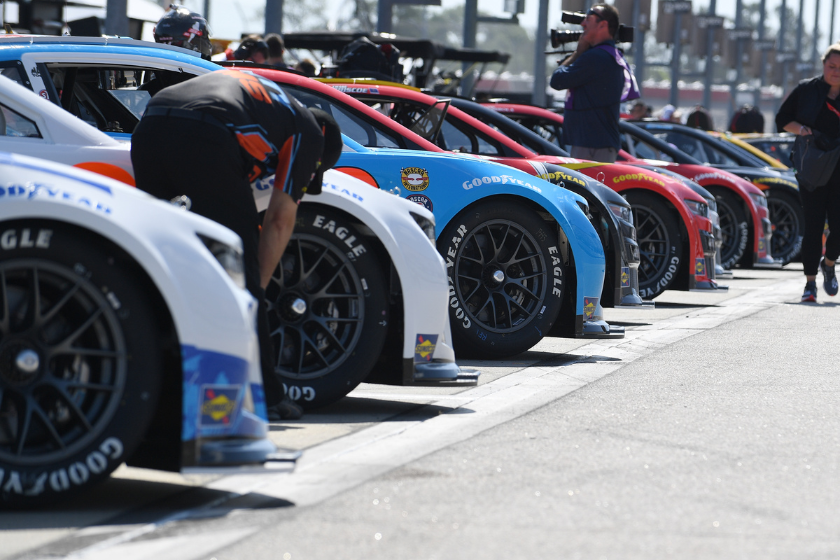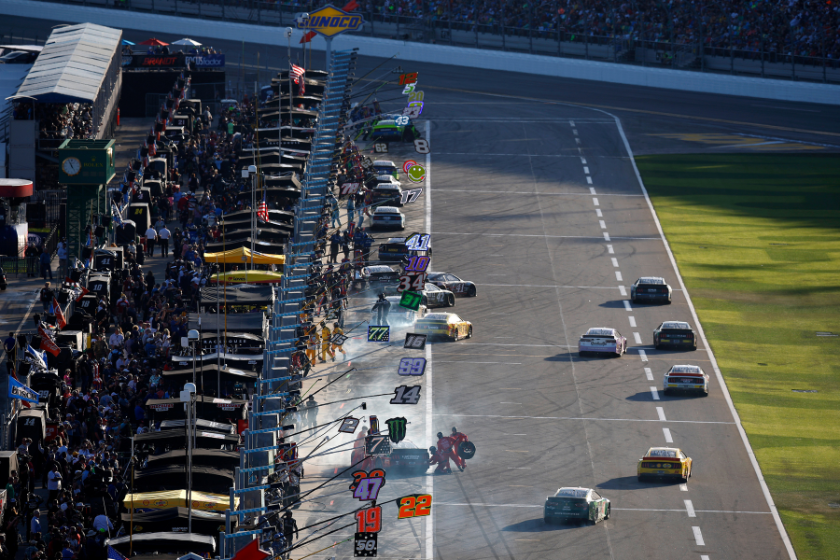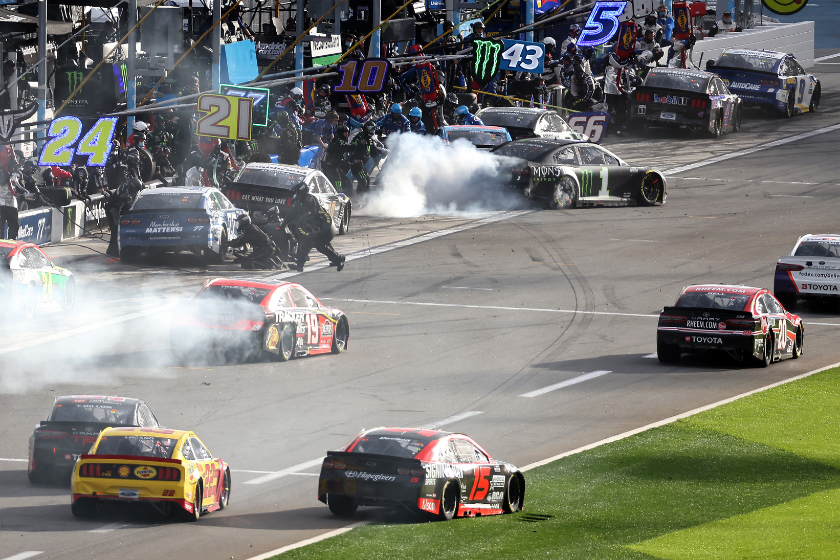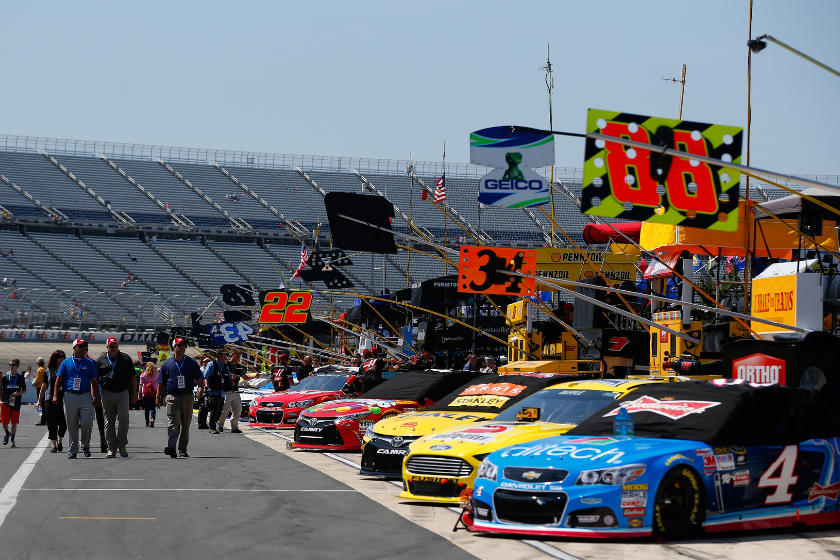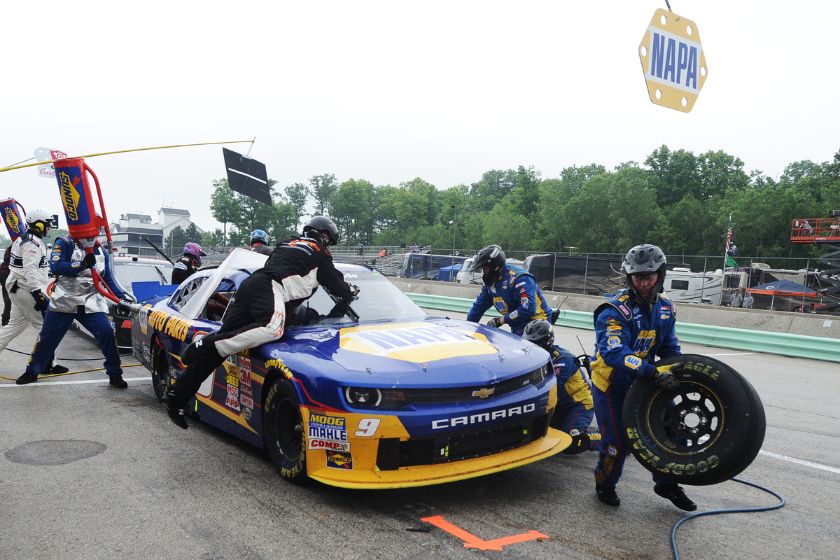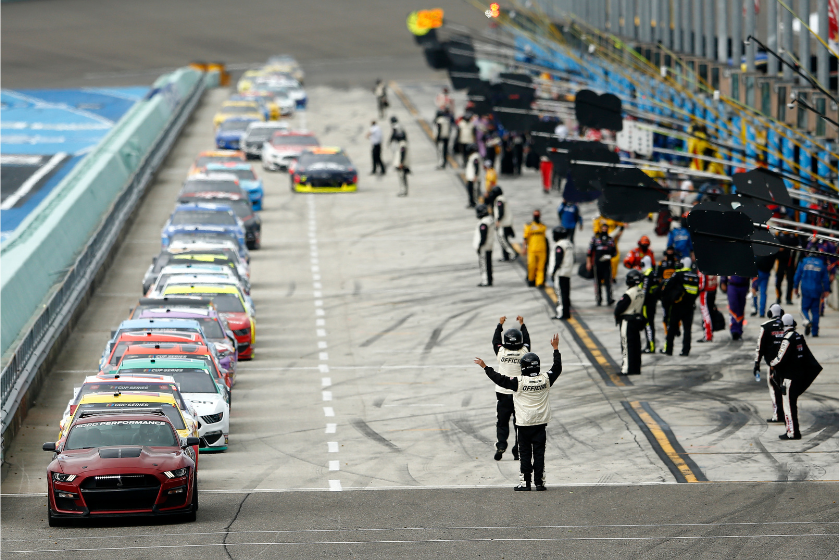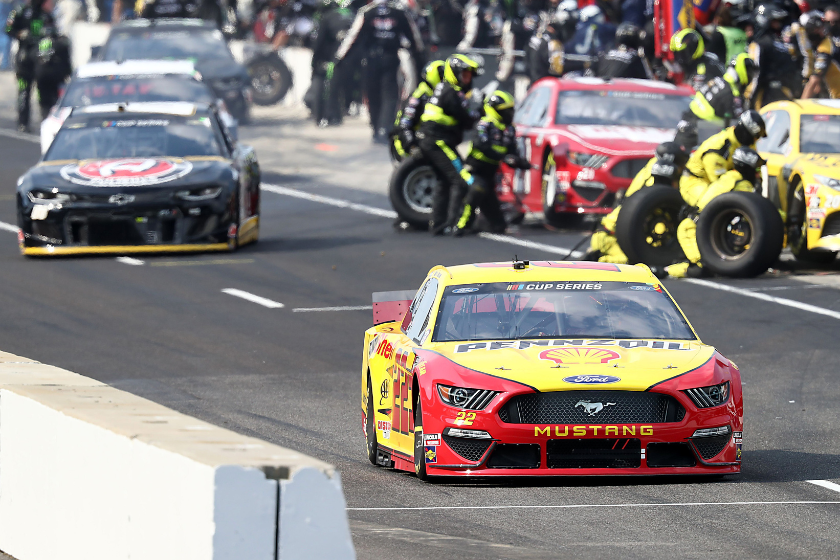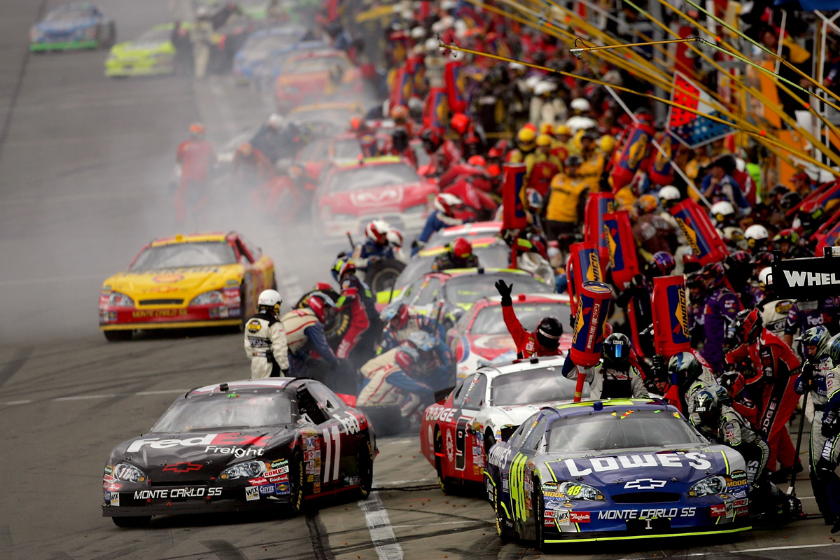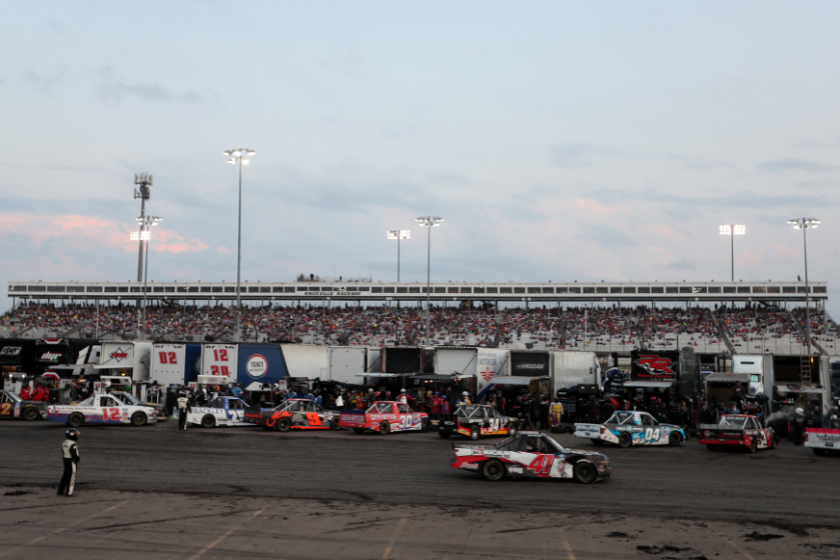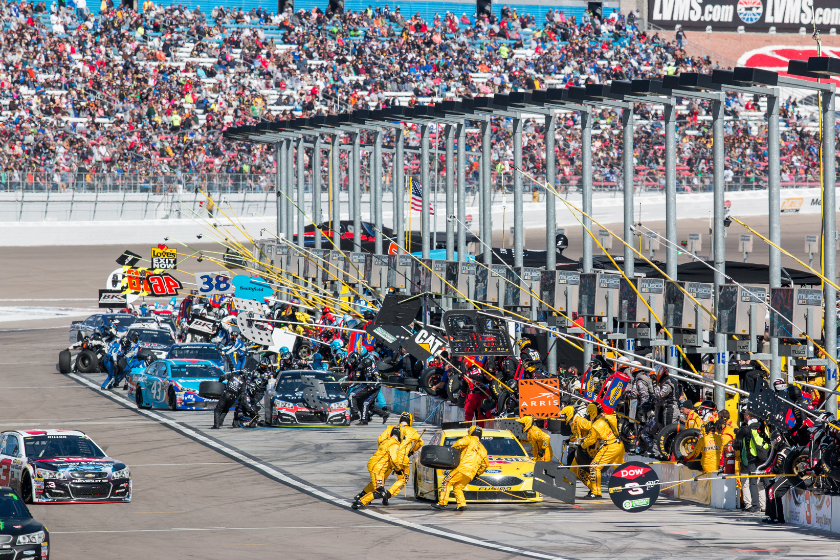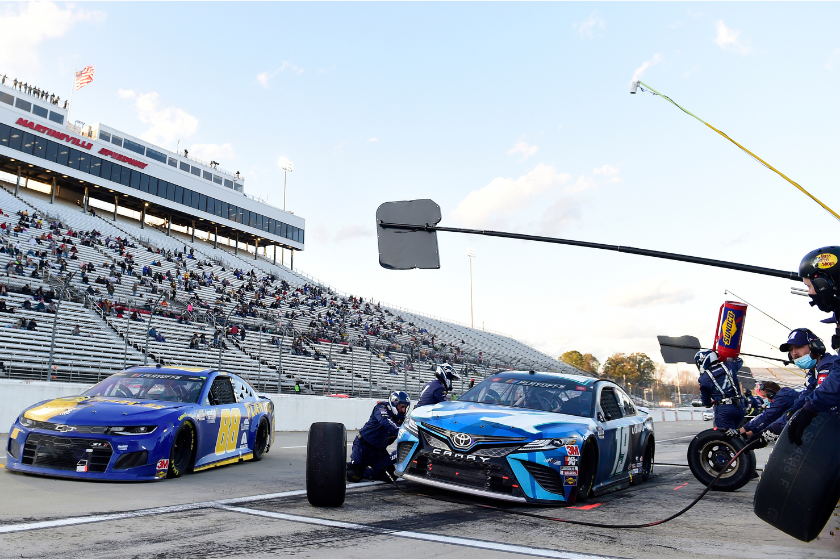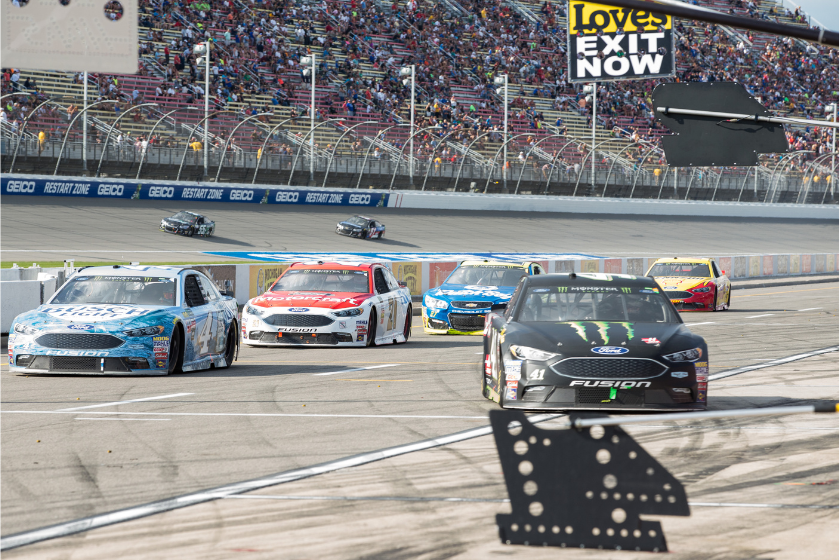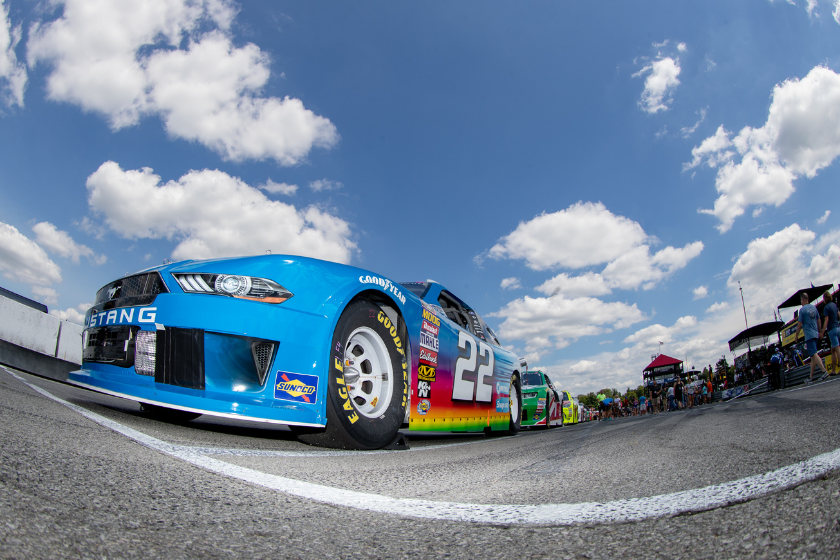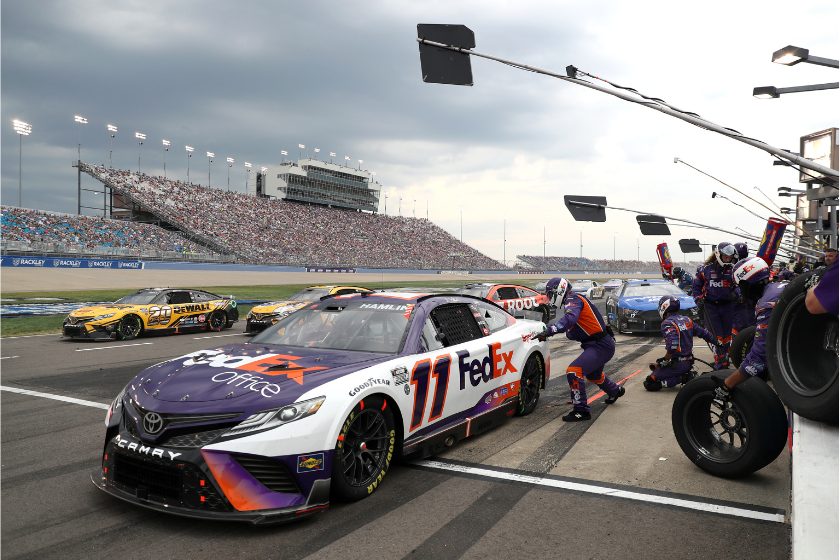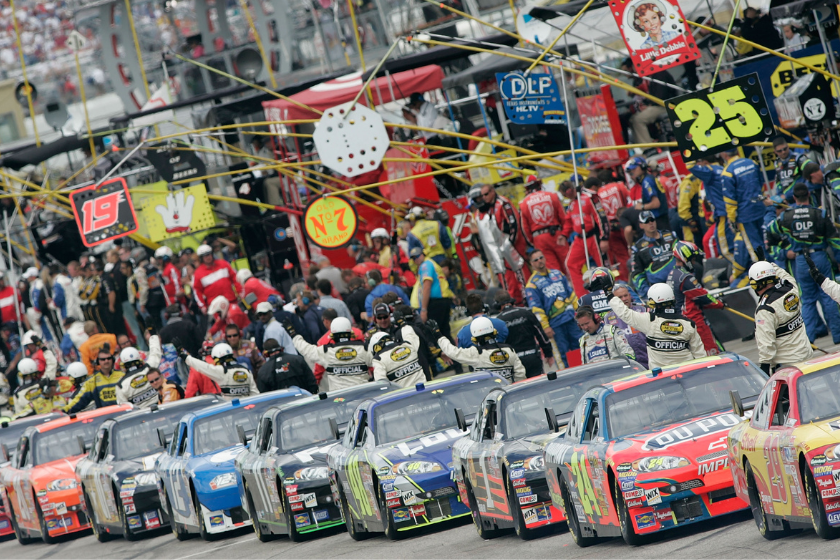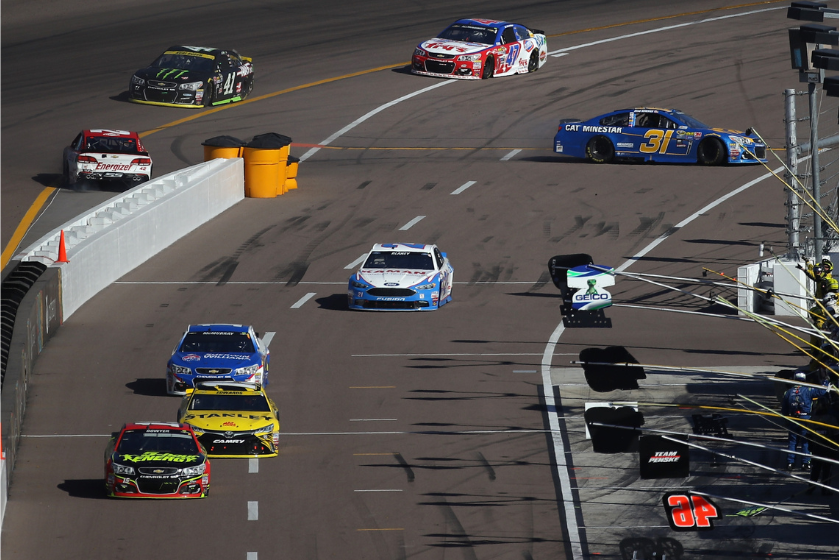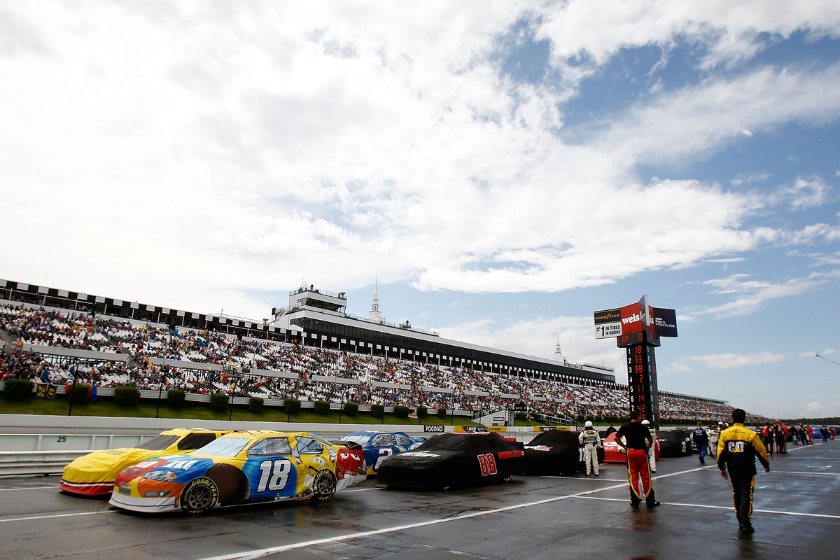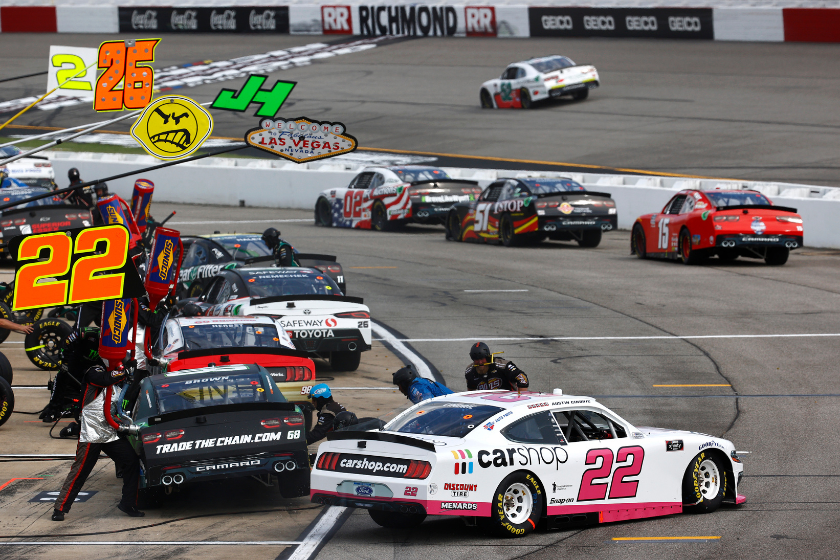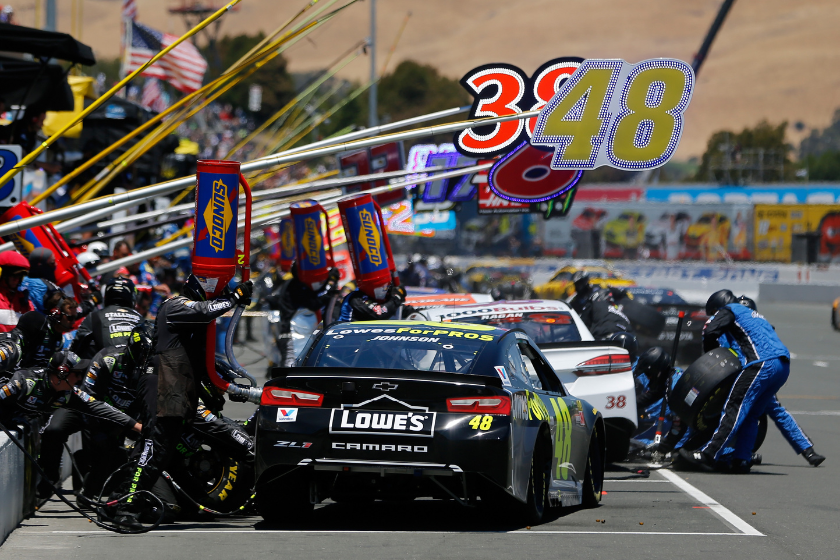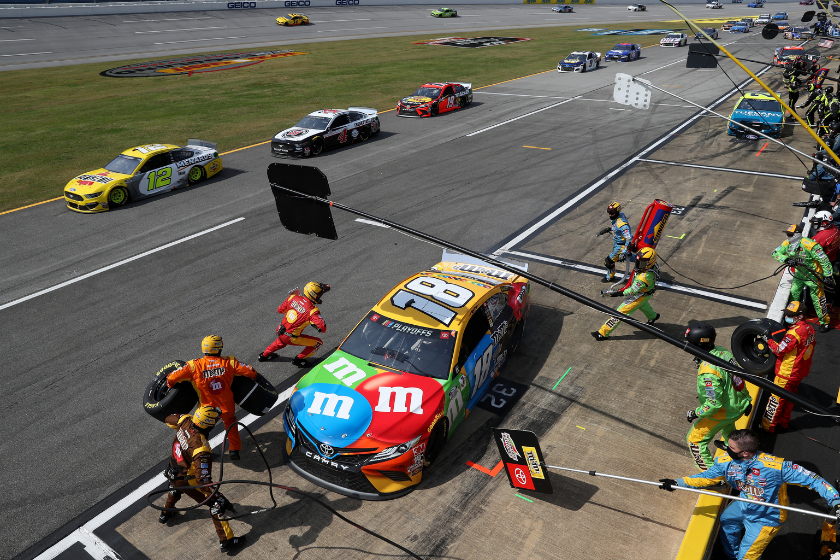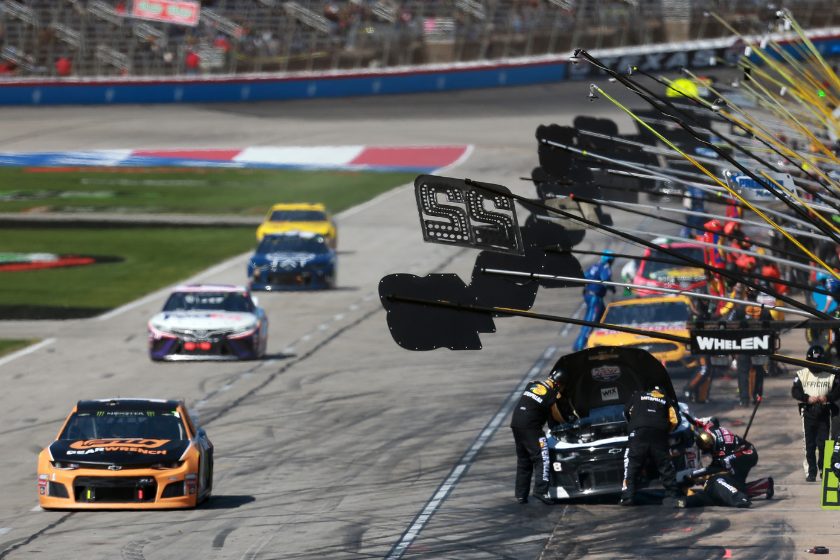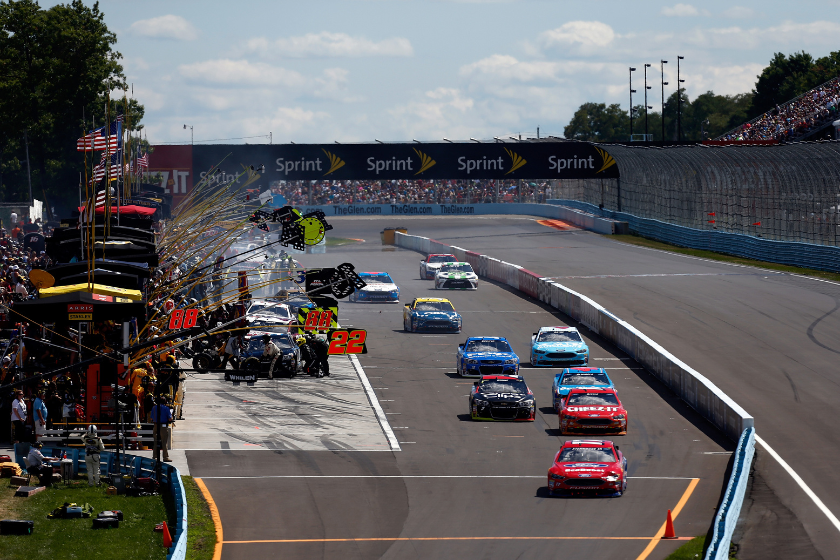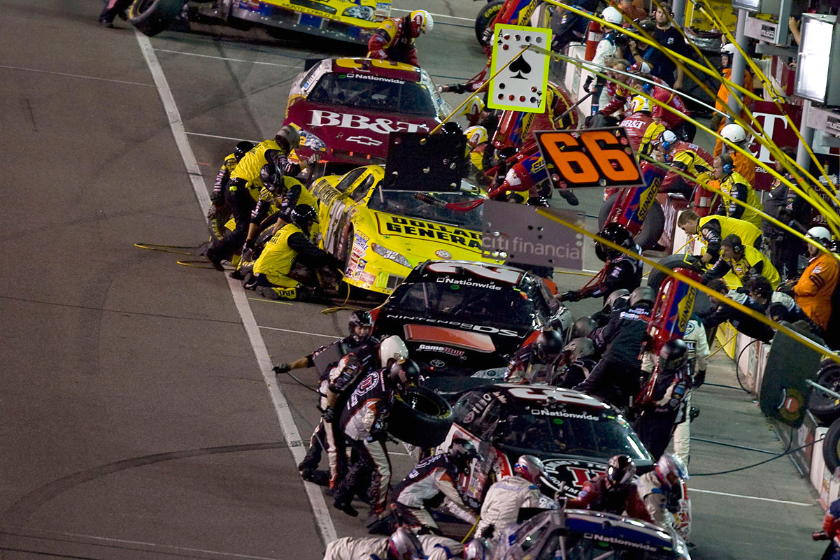Considering that average speeds during a NASCAR race can exceed 200 mph, the phrase "NASCAR speed limit" may seem like an oxymoron. But, as it turns out, the stock car racing sanctioning body has been implementing speed limits for more than 30 years, and it all dates back to the 1990 Atlanta Journal 500 at Atlanta Motor Speedway.
Videos by FanBuzz
On lap 300 of the NASCAR Winston Cup Series race, Ricky Rudd headed into pit road to refuel and get new tires. While he was attempting to come to a stop, his brakes locked up, causing his No. 5 Chevy Lumina to slam into the back of Bill Elliott's parked No. 9 Ford Thunderbird. Mike Rich, a crew member from Melling Racing, was changing Elliott's right rear tire at the time when he became pinned under Rudd's car as a result of the collision. He sustained severe head and chest injuries from the accident and died of cardiac arrest minutes later at a local hospital during surgery for his injuries. He was 32.
The following season, NASCAR implemented a number of safety procedures to keep pit crew members safe, one of the most important of these procedures being pit road speed limits. Today, these limits depend largely on track design, so a smaller track like Bristol has a speed limit of 30 mph, while a superspeedway like Talladega has a speed limit of 55 mph.
Now, NASCAR officials aren't clocking speed limits like traffic cops with radar guns. As Diandra Leslie-Pelecky, the author of the book The Physics of NASCAR, explains, officials calculate the average pit road speed limit based on high-level data, and based on these averages, they can determine how fast a car is coming into pit road and dish out penalties if need be. In 2021, 143 of the 204 driver-incurred penalties resulted from speeding on pit road, which was an improvement compared to recent years (over 80% of penalties in 2020 resulted from pit road speeding).
When you look at NASCAR as a whole, pit road speed limits may seem like boring footnotes that go against fans' fondness for high-speed and aggressive racing. But, as with most safety measures that NASCAR has implemented over the years, it is a necessary part of the sport's commitment casualty-free competition. If NASCAR can avoid another tragic Mike Rich incident, then it's definitely a step in the right direction.
NASCAR Speed Limits by Track
Atlanta Motor Speedway
Pit Road: 45 mph
Caution Vehicle: 55 mph
Bristol Motor Speedway
Pit Road: 30 mph
Caution Vehicle: 35 mph
Canadian Tire Motorsport Park
Pit Road: 40 mph
Caution Vehicle: 45 mph
Charlotte Motor Speedway Oval
Pit Road: 45 mph
Caution Vehicle: 55 mph
Charlotte Motor Speedway Road Course
Pit Road: 40 mph
Caution Vehicle: 45 mph
Circuit of the Americas
Pit Road: 40 mph
Caution Vehicle: 50 mph
Darlington Raceway
Pit Road: 45 mph
Caution Vehicle: 50 mph
Daytona International Speedway
Pit Road: 55 mph
Caution Vehicle: 70 mph
Daytona International Speedway Road Course
Pit Road: 45 mph
Caution Vehicle: 50 mph
Dover International Speedway
Pit Road: 35 mph
Caution Vehicle: 45 mph
Elkhart Lake's Road America
Pit Road: 40 mph
Caution Vehicle: 45 mph
Homestead-Miami Speedway
Pit Road: 45 mph
Caution Vehicle: 55 mph
Indianapolis Motor Speedway Road Course
Pit Road: 40 mph
Caution Vehicle: 45 mph
Kansas Speedway
Pit Road: 45 mph
Caution Vehicle: 55 mph
Knoxville Speedway
Pit Road: 30 mph
Caution Vehicle: 30 mph
Las Vegas Motor Speedway
Pit Road: 45 mph
Caution Vehicle: 55 mph
Martinsville Speedway
Pit Road: 30 mph
Caution Vehicle: 35 mph
Michigan International Speedway
Pit Road: 55 mph
Caution Vehicle: 65 mph
Mid-Ohio Sports Car Course
Pit Road: 35 mph
Caution Vehicle: 45 mph
Nashville Superspeedway
Pit Road: 45 mph
Caution Vehicle: 55 mph
New Hampshire Motor Speedway
Pit Road: 45 mph
Caution Vehicle: 50 mph
Phoenix Raceway
Pit Road: 45 mph
Caution Vehicle: 50 mph
Pocono Raceway
Pit Road: 55 mph
Caution Vehicle: 70 mph
Richmond Raceway
Pit Road: 40 mph
Caution Vehicle: 45 mph
Sonoma Raceway
Pit Road: 40 mph
Caution Vehicle: 45 mph
Talladega Superspeedway
Pit Road: 55 mph
Caution Vehicle: 70 mph
Texas Motor Speedway
Pit Road: 45 mph
Caution Vehicle: 55 mph
Watkins Glen International
Pit Road: 40 mph
Caution Vehicle: 45 mph
Worldwide Technology Raceway at Gateway
Pit Road: 45 mph
Caution Vehicle: 50 mph
